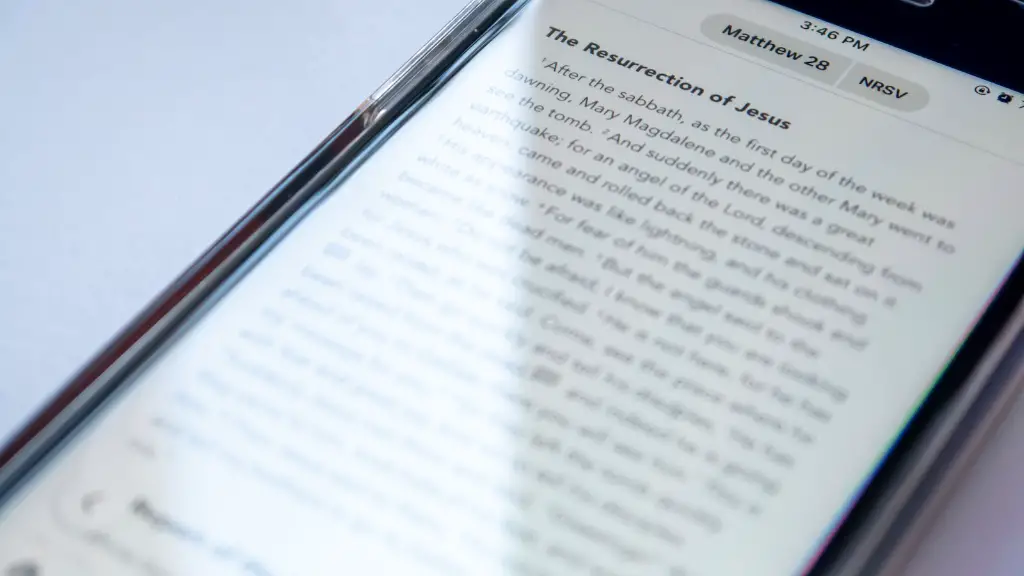Origin and Influence of the Serenity Prayer
The serenity prayer is an invocation originating from Christian theology, which is used by multiple belief systems, including mainstream Christianity, Islam, and Buddhism. It was composed by the Protestant theologian Reinhold Niebuhr who is mainly credited as its creator. The prayer was popularized through Alcoholics Anonymous and is so known through them as the ‘Serenity Prayer.’ It is short but conveys much impact – especially for those affected by addiction.
The first line of the serenity prayer reads, “God grant me the serenity to accept the things I cannot change, courage to change the things I can, and wisdom to know the difference”. These three concepts within the prayer provide the people who use it an understanding that there are some forces in life one cannot overcome no matter how much will power or effort is put into it and that some acts can have an effect in one’s life and therefore should be embraced. The second line of the prayer, “Living one day at a time, enjoy today and trust God and leave tomorrow in His hands” emphasizes the idea of living ‘in the moment’ and trusting that the Lord will look after the future.
The serenity prayer has had tremendous influence in the sphere of mental health, where it is often used in counseling and therapy sessions, as a means of helping individuals dealing with anxiety and depression. The Serenity Prayer is now commonly found in the treatment plans, not just of AA members, but of people with all kinds of other psychological and spiritual struggles, including: grief, grief over substance abuse, managing physical and mental pain, making difficult decisions and preparing for life transitions.
Most Widely-Accepted Version of the Prayer
The most widely-accepted version of the prayer is the one that was written by Niebuhr. It goes as follows:
“God, give us grace to accept with serenity the things that cannot be changed, courage to change the things which should be changed, and the wisdom to distinguish the one from the other. Living one day at a time, enjoy today and trust tomorrow in God’s mercy. Amen”
It is an expression of faith in prayer and it has been used in many contexts, including both secular and religious. In the last decades, it has been used in bereavement counseling, addiction recovery meetings, and spiritual retreats. The prayer allows individuals to develop an attitude of acceptance, to become at peace with their life circumstances and to relinquish control of the uncontrollable.
Criticisms of The Serenity Prayer
The serenity prayer has come under criticism due to its association with alcohol use. Some members of the religious community feel that the use of alcohol and references to it should be avoided in religious contexts. Also, some people have argued that the prayer is encouraging unilateral acceptance, which should not be advocated.
Moreover, some have criticized the text for failing to live up to its own admonition to trust in God for deliverance in the future, despite the fact that some larger religious texts note that it is perfectly alright to plan and work for the future. Critics feel the serenity prayer’s invocation of God to help in ‘living one day at a time’ is a form of spiritual escapism, which may not be appropriate in all kinds of struggles.
Is The Serenity Prayer In The Bible?
The short answer is no. The serenity prayer is not in the Bible and was written after the completion of the Bible. The prayer was composed by the theologian Reinhold Niebuhr in 1934 and its original words are slightly different from the words we know today. The serenity prayer is a powerful reminder that we must accept the things we cannot change and have the courage to face the things we can.
The prayer’s message is in agreement with Christian teaching. The Bible contains many verses that are in line with the philosophy of the prayer. Isaiah 43:2, Galatians 6:9, and Romans 8:25-28 all echo some of the ideas found in the serenity prayer. For example, the verses in Isaiah and Galatians emphasize the importance of courage and being hopeful in the face of adversity and Romans 8 talks about trusting in God even when life is difficult.
Power of the Prayer
The power of the Serenity Prayer is found in its reminder to the person using it to be realistic and to persevere in the face of difficulties. The prayer has become a universal source of comfort and motivation for those who have encountered difficulties that have caused pain or distress. At the same time, it is a reminder to not let adversity define us but rather to remain hopeful and use our faith as a source of strength and guidance.
The Serenity Prayer has been used as an inspiration in many forms of literature, film, art, music and poetry. Its thoughtful and powerful message has made it a source of comfort and strength for those struggling with addiction, mental health issues, physical pain, and difficult transitions. The message of the serenity prayer is still relevant today and can be an encouraging reminder of how to stay strong even in difficult moments.
Effectiveness of the Prayer in Addiction Recovery
The Serenity Prayer has become a cornerstone of recovery and treatment programs. Research suggests that the Serenity Prayer is an effective way to help individuals struggling with addictions to accept their situation and take action to overcome it. Furthermore, the prayer has been a source of comfort for individuals facing difficult times in their recovery, allowing them to accept their mistakes and experience a sense of peace, even when “life is not perfect”.
Studies have also shown that individuals who use the Serenity Prayer as part of their recovery are less likely to relapse, due to the calming feelings it can evoke. In addition, it is important to note that using the serenity prayer as part of one’s recovery journey can also be a source of spiritual growth and personal development, as it focuses on cultivating self-acceptance and faith in the Lord.
Describing the Serenity Prayer in Other Ways
The Serenity Prayer can also be expressed in different ways to help bring a greater understanding and appreciation for its power and meaning. For example, it can be uttered as an affirmation, a reminder to keep in mind throughout the day. It also can be used as an inspiring mantra during yoga and meditation.
The prayer can also be used to encourage self-reflection and to look more closely at the things in life that can be changed and the things that need to be accepted. Additionally, the prayer can act as a guide for those facing personal challenges, such as addiction, and provide the necessary support needed to overcome the issue.
Theology of the Serenity Prayer
The theology of the Serenity Prayer has largely been shaped by the Christian tradition, although other traditions, such as Buddhism, have adopted similar ideas associated with the prayer. The prayer focuses on surrendering to the will of God and trusting in His mercy and guidance.
At its core, the prayer encourages an attitude of humble acceptance, putting one’s trust in God to work out the details. It challenges individuals to focus on their current circumstances and to make the best of what they have right now, before focusing on the things they cannot change or control in the present.
The prayer encapsulates a refreshingly realistic perspective of life, without the need to ignore difficult circumstances or to be overly idealistic. This can be seen as a way of connecting to a more spiritually mature attitude, one in which we do not ignore the challenges we face, but instead seek to make the best of them.
Modern Day Use of the Prayer
Though the Serenity Prayer is not an official part of the Bible, it is a popular text that is often used in Christian worship services and is found in the liturgy of many different mainstream denominations. People find comfort by using this prayer as part of their daily devotion as a way of sustaining spiritual growth and development.
The serenity prayer is also widely used in self-help books and workshops which focus on improving emotional and mental wellbeing. In the present age, the prayer has become a source of inspiration for many individuals, reminding them to stay strong during difficult times and to accept circumstances with grace.
Use of the Prayer for Listening and Guidance
The prayer is a powerful reminder to always maintain an attitude of humble acceptance and willingness to learn from whatever life may bring. It provides an opportunity to take a step back from situations we cannot control and consider them from a different perspective.
To use the prayer as a guide, it is important to remember that despite the difficult times we may face, it is possible to remain composed and stay focused on the things we can change. Furthermore, the prayer can be used as an anchor in moments of doubt, helping to bring an understanding that life is always changing and it is important to view each new challenge with faith and courage.
Using the Prayer to Create Acceptance and Surrender
The serenity prayer can be used to cultivate a sense of acceptance and surrender to life’s uncertainties, instead of trying to control them. Rather than attempting to manage the uncontrollable, this prayer encourages one to look to the Lord for strength and guidance and to trust in the Lord’s goodness.
The serenity prayer breeds hope and can be an effective tool in difficult moments. In moments of adversity, it can provide a reminder that even though the present situation may be difficult, faith in God and trusting in His divine plan can help overcome whatever obstacle may be faced.
Interpretation of the Prayer’s Principles
The interpretation of the principles in the serenity prayer can be highly personal, and therefore it is important to cultivate an individualized understanding of the text. For some, this may mean turning to God for the strength to accept what cannot be changed, or finding courage to embrace changes one can make.
Others may find the prayer a source of guidance, providing comfort in moments of difficulty and providing support in times of struggle. Ultimately, the prayer is an invitation to look to the Lord and to view life in a more accepting, hopeful and faithful light.



